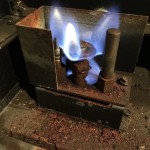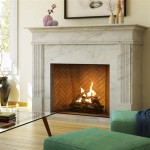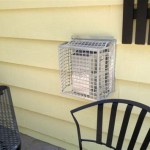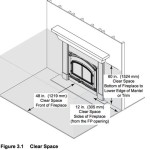Installing a Gas Fireplace on an Interior Wall: A Comprehensive Guide
Installing a gas fireplace on an interior wall can significantly enhance the ambiance and heating efficiency of a home. Unlike traditional wood-burning fireplaces, gas models offer convenience, consistent heat output, and reduced emissions. However, this project requires careful planning, adherence to safety regulations, and a thorough understanding of building codes. This article provides a detailed guide on installing a gas fireplace on an interior wall, covering essential steps, considerations, and best practices.
1. Preliminary Planning and Assessment
The first step involves careful evaluation of the intended location and the existing infrastructure. This stage is critical for ensuring the feasibility and safety of the installation.
Location Assessment: Selecting a suitable location is paramount. The chosen wall should Ideally, the designated wall should be relatively free from obstructions such as electrical wiring or plumbing pipes and accessible for gas line installation. Avoid areas with high traffic or flammable materials nearby. Consider the fireplace's clearance requirements from combustible materials, as specified by the manufacturer. These clearances are crucial for preventing fire hazards. Confirm that the floor beneath the installation area can adequately support the weight of the fireplace unit, especially for heavier models.
Ventilation Requirements: Gas fireplaces require proper ventilation to safely exhaust combustion byproducts. There are two primary types of venting systems: direct vent and vent-free. Direct vent systems draw combustion air from outside and exhaust gases directly outdoors through a sealed vent, typically installed horizontally through the wall or vertically through the roof. Vent-free systems, on the other hand, do not require external venting, but their use may be restricted by local building codes due to concerns about indoor air quality. Selecting the appropriate venting system depends on the fireplace model, location, and local regulations. Local building codes may have specific restrictions about vent-free systems, especially in smaller spaces.
Gas Line Accessibility: The installation will necessitate connecting the fireplace to an existing gas line or running a new gas line from the main gas meter. If an existing gas line is nearby, its capacity must be assessed to ensure it can handle the additional load of the fireplace. If a new gas line is required, it must be installed by a qualified professional in accordance with all applicable codes and regulations. Obtain the necessary permits before commencing any gas line work. Accurate measurements of the distance between the gas supply and the fireplace location will be needed for material estimation.
Permitting and Inspections: Prior to starting any installation work, obtain all necessary permits from the local building department. Permitting ensures that the installation complies with building codes and safety regulations. The building department will likely require inspections at various stages of the installation, including the gas line connection and the final setup. Failure to obtain permits can result in fines and delays. Furthermore, it can lead to the removal of the fireplace if it does not meet code requirements.
2. Selecting the Appropriate Gas Fireplace
Choosing the correct gas fireplace model is essential for achieving the desired aesthetic and functional performance. Various factors must be considered during the selection process, including style, heat output, and venting requirements.
Fireplace Style and Design: Gas fireplaces are available in a wide range of styles and designs, from traditional to contemporary. Select a style that complements the existing décor and architectural features of the room. Consider the size and shape of the fireplace opening, as well as the materials and finishes. Common options include log sets, glass media, and decorative stones. Some fireplaces feature adjustable flame heights and ember beds for added realism, while others prioritize minimalist design with sleek lines and modern materials.
Heat Output and Efficiency: Determine the appropriate heat output for the room size. Gas fireplaces are rated in British Thermal Units (BTUs). A higher BTU rating indicates greater heat output. Select a fireplace with a BTU rating that is sufficient to heat the space without overheating it. Energy efficiency is another crucial factor. Look for models with high AFUE (Annual Fuel Utilization Efficiency) ratings, which indicate how efficiently the fireplace converts fuel into heat. High-efficiency models can save money on energy bills and reduce environmental impact.
Venting System Compatibility: Ensure that the selected fireplace is compatible with the chosen venting system. Direct vent fireplaces require specific vent components designed for horizontal or vertical termination. Vent-free fireplaces, as mentioned earlier, do not require external venting, but their use may be restricted by local codes. Confirm that the venting system meets all manufacturer's specifications and local building codes. Incorrect venting can lead to dangerous carbon monoxide buildup. Double-check the sizing and material of the venting pipes to ensure compliance.
Safety Features and Certifications: Prioritize safety by selecting a gas fireplace with built-in safety features, such as a flame failure device (FFD) that automatically shuts off the gas supply if the flame is extinguished. Look for models that are certified by recognized testing laboratories, such as UL (Underwriters Laboratories) or CSA (Canadian Standards Association). These certifications indicate that the fireplace has been tested and meets safety standards. Also, consider models with child safety screens to prevent accidental burns.
3. Installation Procedure
The installation process should be meticulous and follow the manufacturer’s instructions closely. Adherence to these guidelines is crucial for safety and optimal performance.
Framing and Preparation: Construct a frame around the fireplace opening using fire-resistant materials, such as metal studs or fire-rated lumber. The frame should be built according to the fireplace manufacturer's specifications. Ensure that the framing is level and plumb. Install insulation around the frame to prevent heat transfer to adjacent walls and reduce energy loss. Use appropriate fasteners and connectors to create a sturdy and secure frame. Before proceeding, double-check all measurements to ensure accurate alignment.
Venting Installation: Install the venting system according to the manufacturer's instructions and local building codes. For direct vent systems, ensure that the vent pipes are properly sealed and connected to prevent leaks. The vent termination should be located in a place that allows for proper exhaust dispersion and avoids obstructions. For vent-free systems, ensure adequate room ventilation to prevent carbon monoxide buildup. A carbon monoxide detector should always be installed near any gas appliance. Periodically inspect the venting system for any signs of damage or deterioration.
Gas Line Connection: Hire a qualified and licensed gas fitter to connect the fireplace to the gas supply line. The gas fitter will ensure that the gas line is properly sized, installed, and tested for leaks. A shut-off valve should be installed near the fireplace for easy access in case of emergencies. The gas line connection must comply with all applicable codes and regulations. Never attempt to connect the gas line without the proper training and certification. After the connection, a soap bubble test should be conducted to check for any leaks.
Fireplace Placement and Securing: Carefully position the fireplace unit within the framed opening, ensuring that it is level and plumb. Secure the fireplace to the frame using appropriate fasteners, as specified by the manufacturer. Install any necessary trim or finishing materials to conceal the framing and create a finished look. Double-check all clearances from combustible materials before completing the installation. Ensure that all wiring and connections are properly secured and protected. After installation, carefully inspect the fireplace for any signs of damage or defects.
Testing and Inspection: After completing the installation, thoroughly test the fireplace to ensure that it is functioning correctly. Check the flame pattern, heat output, and venting system. Inspect all connections for leaks or malfunctions. Arrange for a final inspection by the local building department to verify compliance with building codes. Do not use the fireplace until it has passed inspection and all necessary permits have been finalized. Keep all documentation, including permits and inspection reports, for future reference.
Installing a gas fireplace on an interior wall is a complex project that requires careful planning, adherence to safety regulations, and a thorough understanding of building codes. By following this guide, homeowners can increase their chances of a safe and successful installation.

Can You Install A Gas Fireplace On Interior Wall Just Log Fires

Install A Gas Fireplace Framing Finishing Pt 2 Diy Living Room Remodel
Have Your Fire Wherever You D Like Heatilator
Gas Fireplace Venting Explained Heat Glo
Have Your Fire Wherever You D Like Heatilator

Hole In The Wall Installation Guide Direct Fireplaces

Make A Feature Wall For Mounting Fireplace And Tv

Can Gas Fireplaces Be Installed On Interior Walls Ehow

How To Modernize And Update A Gas Fireplace We Love Fire

How To Install A Fireplace Insert Diy Save Money
Related Posts








